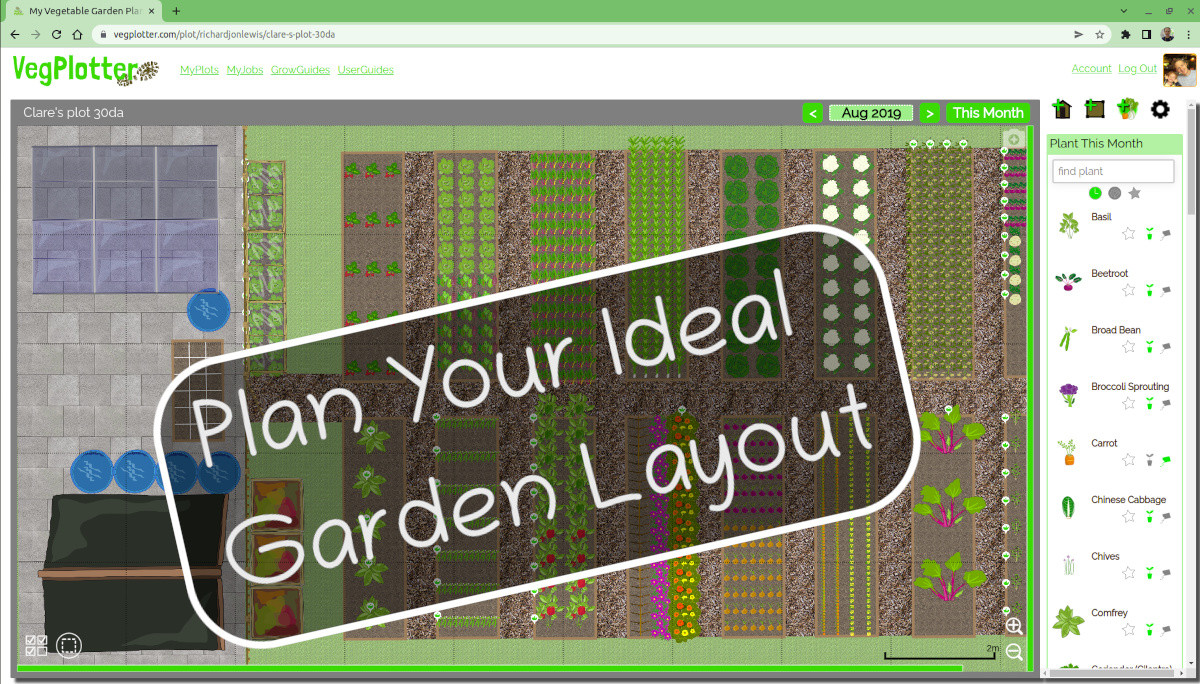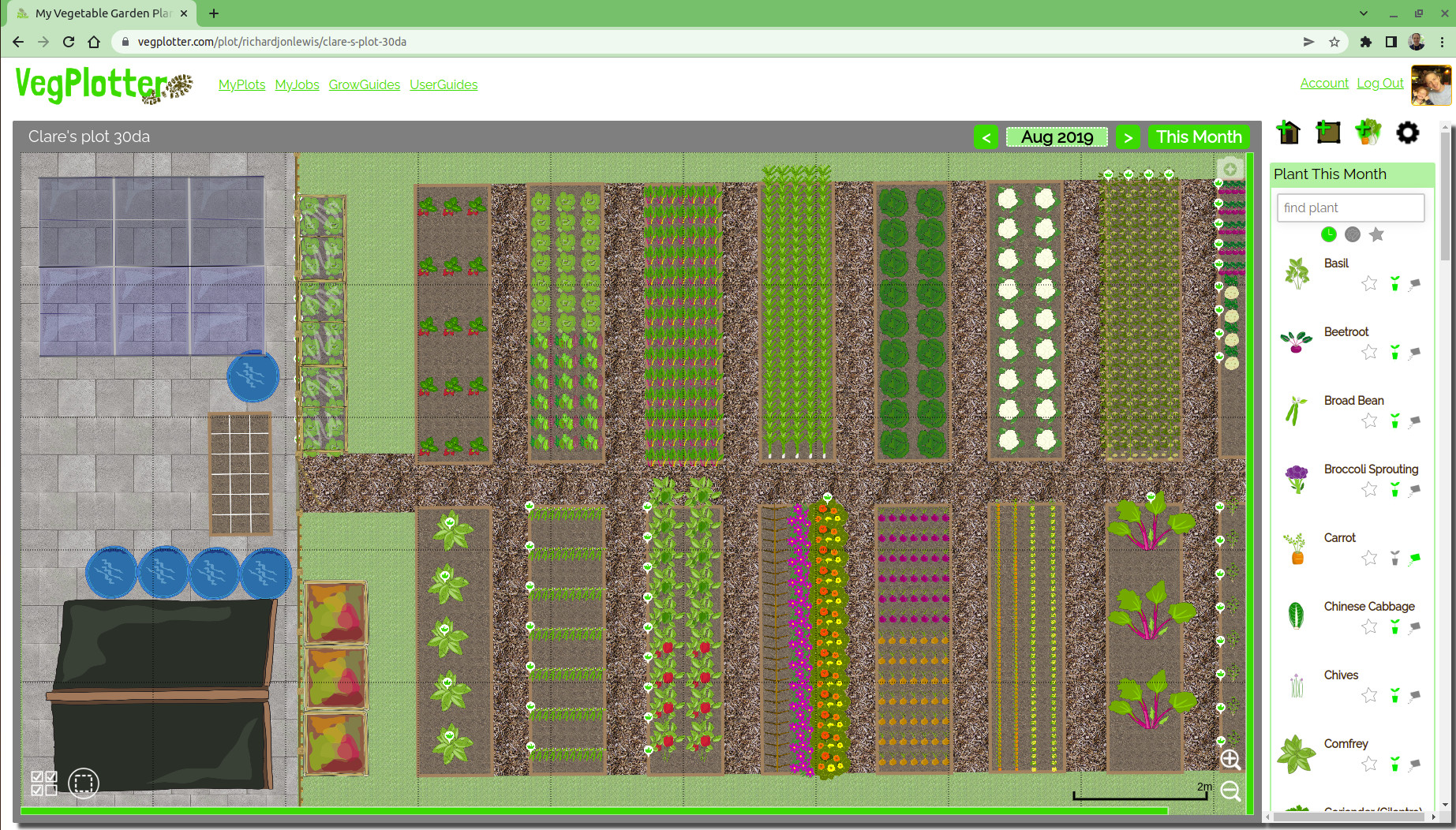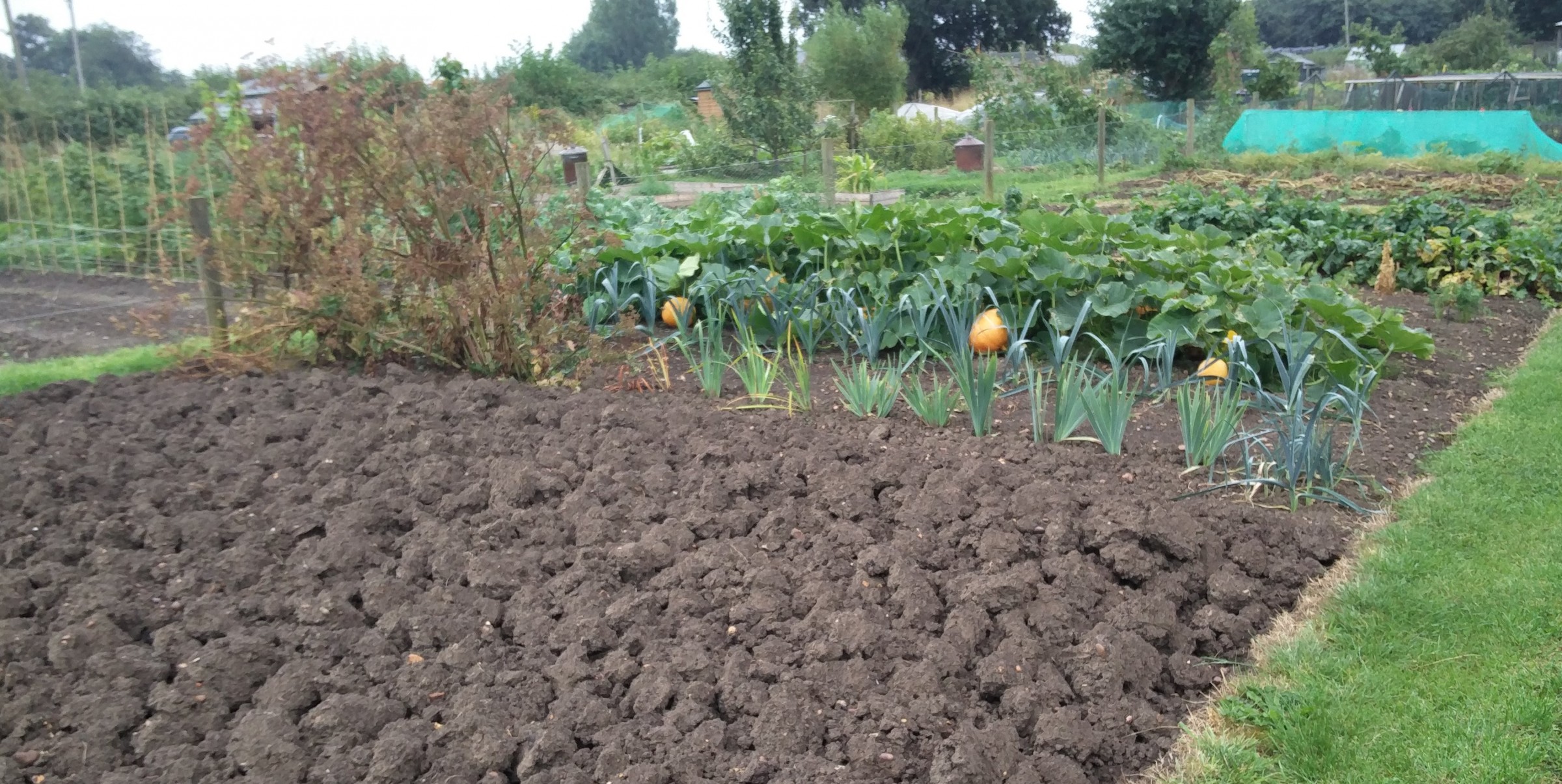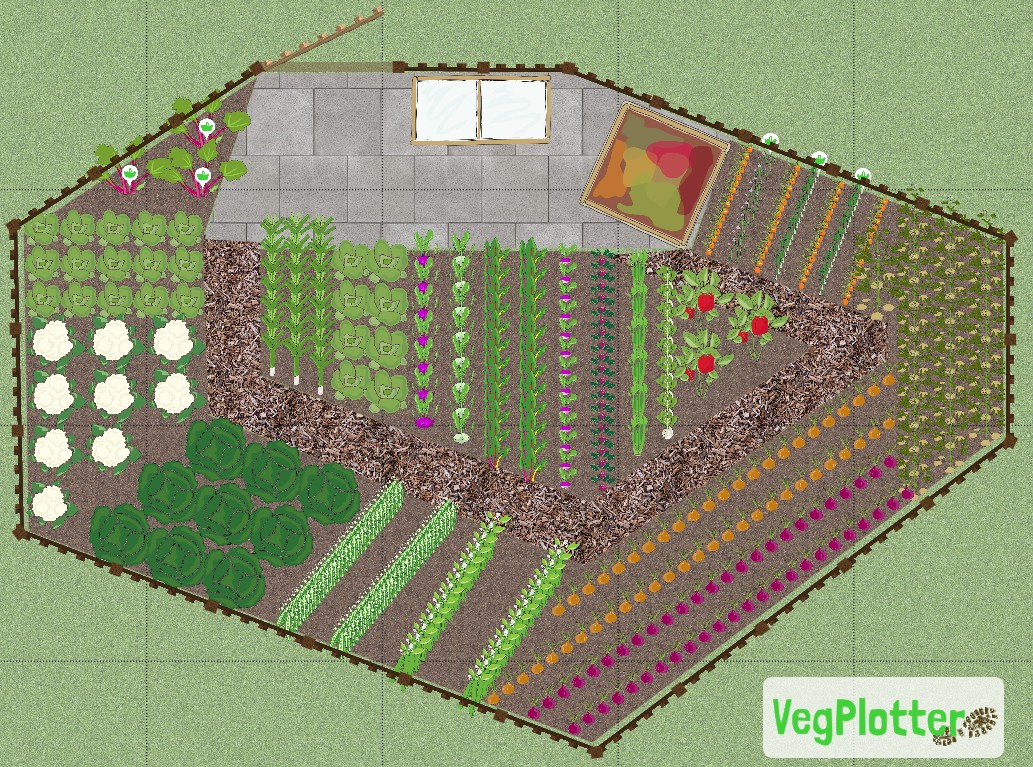How to plan your ideal vegetable garden layout

If you give some thought to the layout of your garden before you start to dig, then you can make sure that you get the best layout for you. Many people just start by digging a bed without consideration for how they want the final garden to be laid out. Just a little forethought can help immensely. In this article, we go through the key points and steps to take when planning your garden layout.
When planning your ideal vegetable garden layout, following these 6 steps will lead you to your ideal layout.
- Assess your garden space
- Know the sun's path
- Know your soil and ground conditions
- Consider garden structures and furniture
- Consider your ideal bed and path size
- Draw out your ideal garden layout
Assess your garden space
The first step is to assess your space and determine how much of it you have. What are the key features, slopes, trees etc? It is useful to measure your garden so that you can create a fairly accurate layout plan before you start to try out various layouts.
The key here is to sketch out a rough layout of the garden space, considering as you do:
- The overall shape of your garden
- Where the boundary sits and the length of key parts of it.
- The key features (sheds, trees, walls, ponds, slopes etc.) and the distances between each
Although helpful, you don't need to use a tape measure for this step. Centimetre or Inch accuracy is not necessary. A great alternative is to simply count the strides for distances in your garden and then measure your stride length. You can then multiply the number of strides by your stride length to get a rough measure.
Know the sun's path
Knowing the sun's path across your garden is also very important. Most plants (fruit and vegetables especially) do not do well in the shade. You should avoid including vegetable beds in your layout where they will be in constant shade.
So sit in your garden at various points of the day and notice where the sun lands and which areas are shaded.
Also, consider areas that may get lots of sun, especially when up against a wall. They are great for heat-loving crops. So if you have parts of your garden like this, consider including beds there to take advantage of these warming spots of the garden.
Know your soil and ground conditions
Knowing your soil and what the likely ground conditions are likely throughout the year is important too. Key things to consider here are:
- Is it likely the soil will get waterlogged at any point during the year? If this is the case, it might be worth considering building raised beds to lift future crops above the water table.
- Is it particularly sandy or clay soil in areas of the garden? If one area is particularly bad, you can avoid putting your vegetable beds there. If your garden has been used in the past, you will likely have areas where the soil is of better quality with more organic matter (usually darker in colour).
Consider garden structures and furniture
Before setting your garden layout, it is important to consider what garden structures you will need and what furniture you would like to include.
Furniture: It is important to consider where you can sit and enjoy your garden. You'll need to rest and can take a short break and have a cup of tea or coffee whilst working in the garden. So including somewhere to sit and relax is important. This also gives you a chance to sit and consider your garden and what needs to be done.
Storage: You will need to store your tools, equipment, plant support and protection. So consider where. A shed may be needed, or you may just need a smaller covered area for storing your tools.
Seed Germination: Where will you start your seeds and bring on your seedlings? Unless you want to send money to buy seedlings from garden centres, then you will need to consider where you are going to start your seedlings. Greenhouses, hoop houses, polytunnels or cold frames are all great garden structures of this. The key is to have a warm, sunny spot that is protected from wind and rain etc. So you may be able to use a windowsill in your home.
Ideal vegetable bed and path sizes
Traditionally Allotments vegetable gardens would have been one large growing area where vegetables would have been grown as needed. This has the advantage of flexibility each season. But there are many advantages to having a defined bed system with smaller marked-out vegetable beds.
- Limits traffic and compaction of the vegetable beds. Having defined beds with paths reduces the amount you need to step on your vegetable beds. This in turn creates a good soil structure that supports healthy plant growth.
- It makes the prevention of pests and diseases easier to manage through crop rotation. Any defined bed system is much easier to track what was grown where.
- Having smaller defined beds makes supporting and protecting crops much easier. It allows you to build smaller support and protection structures that are easier to store and put up when needed or not.
The ideal bed width is around 1.2m (4 feet), with paths between 60cm (2 feet) wide. This allows you to access all parts of the bed without the need to tread on the soil. The length of each bed is up to you, but bear in mind that the shorter it is, the less you will need to walk from one side of the bed to the other.
Draw out your ideal garden layout
Next, draw out your garden layout. This can be on paper, or you can use an online vegetable garden planner like VegPlotter to help you plan your vegetable garden layout. VegPlotter provides an online vegetable garden layout planner that helps you quickly try out and explored various garden layout ideas before you break the soil in your actual garden. We've included some example garden layouts below to give you some inspiration.
Another important point to consider is the size of your paths. Many people suggest a path width of 60cm or 2 feet. This is designed to allow you to get most mowers and/ or a wheelbarrow down the paths. But you must consider what you will need to take along your paths. For example, if you use a Wheelchair or have a larger lawn mower, you may need larger paths or get away with smaller ones.
Smaller bed systems are easier to manage

One large bed can provide planting flexibility

Perimeter bed systems are great for smaller irregular shaped gardens


